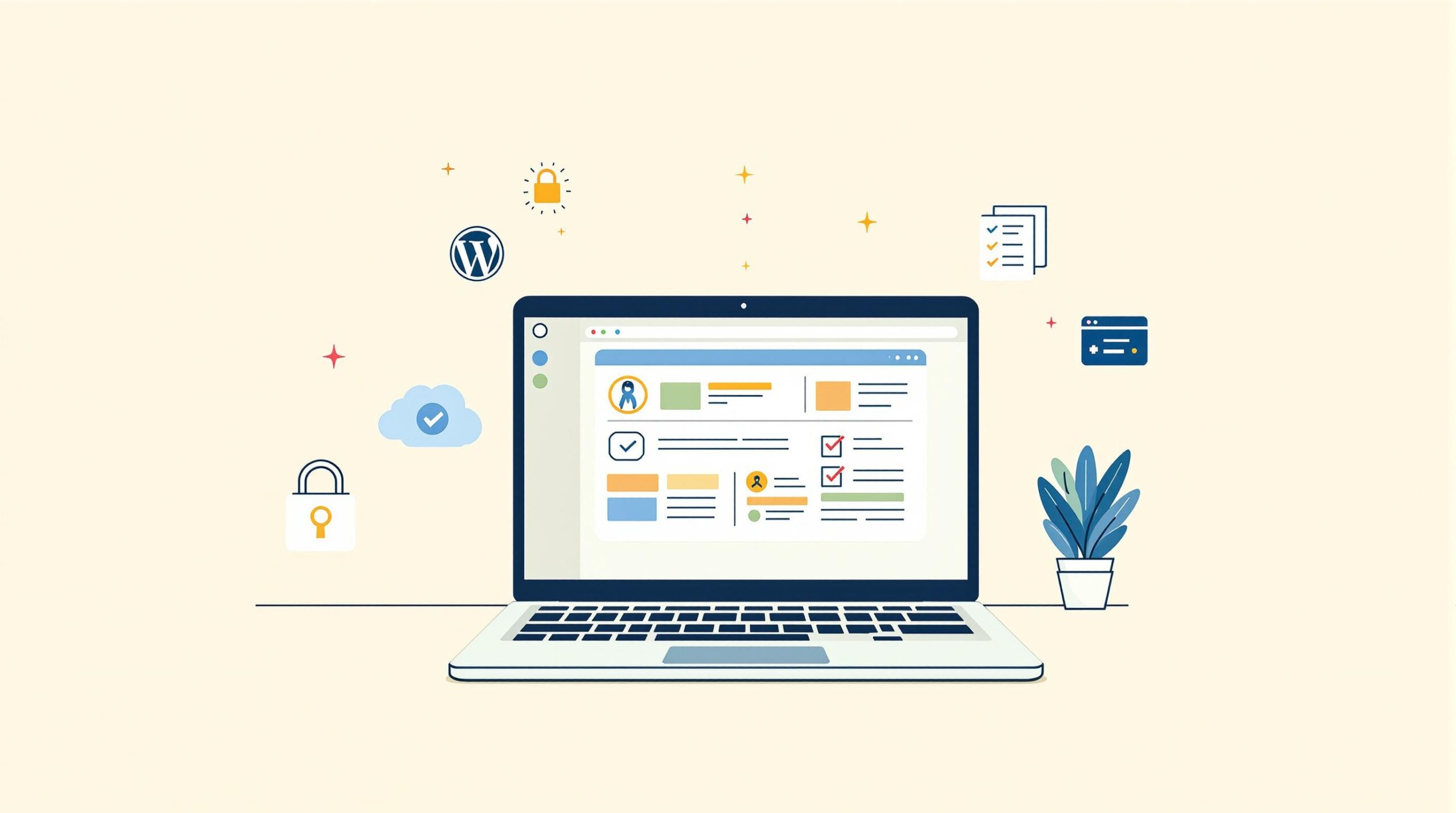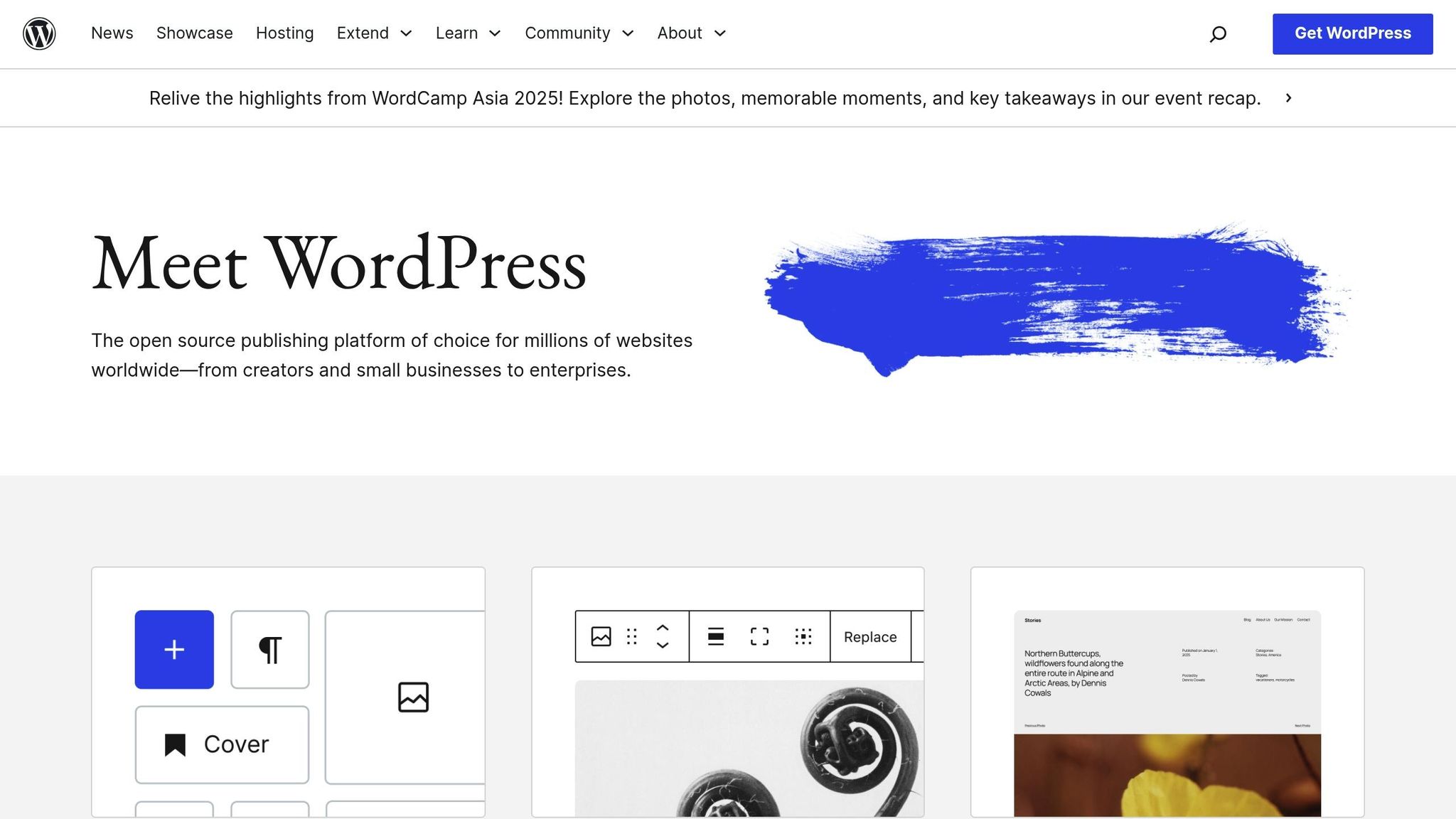How to Secure WordPress During Migration

Migrating your WordPress site? Security should be your top priority. A poorly secured migration can expose your site to data breaches, unauthorized access, and other risks. Here’s how to keep your site safe:
- Back Up Everything: Create encrypted backups of your database, files, and configurations.
- Use Secure Transfers: Always use SFTP or SSH for file transfers and encrypt your database with SSL.
- Update Everything: Ensure WordPress core, plugins, themes, and PHP are updated to the latest versions.
- Restrict Access: Limit IP access, update admin passwords, and refresh API keys and salts.
- Scan for Malware: Run security scans before, during, and after migration to detect vulnerabilities.
- Enable SSL: Keep SSL active on both source and destination servers.
Post-Migration: Test your site, run security scans, and enable long-term protections like 2FA and firewalls. Regular updates and secure hosting are essential for ongoing safety.
Follow these steps to ensure a smooth and secure migration process.
How I Use SSH to Migrate a WordPress Site

Pre-Migration Security Steps
Take these measures to secure your site before starting the migration process.
Create Full Site Backups
Ensure you have a complete backup of your site by following these steps:
- Export the entire MySQL database using phpMyAdmin or the command line.
- Copy all WordPress core files, themes, plugins, and uploads.
- Save important files like
wp-config.phpand.htaccessseparately. - Store these backups in multiple secure locations, including cloud storage.
Always verify the backup files for integrity before proceeding with the migration.
Update WordPress Components
Make sure all WordPress components are up-to-date:
- WordPress Core: Update to the latest stable version.
- Plugins: Update all active plugins that you plan to keep.
- Themes: Update both the active theme and its parent theme.
- PHP Version: Confirm that your hosting environment supports the latest PHP version.
Clean Up Unused Elements
Before migrating, declutter your site by removing:
- Deactivated plugins
- Unused themes
- Outdated core files
- Temporary files and cached data
- Old backups
- Unnecessary database tables
After cleaning up, refresh your access credentials to enhance security.
Reset Access Credentials
Updating credentials ensures better control and protection during and after migration.
- WordPress Admin: Create new admin passwords with at least 16 characters, using a mix of uppercase, lowercase, numbers, and special characters.
- Database Access: Update the database username, password, host, and table prefix in the
wp-config.phpfile. - FTP/SFTP Access: Set up new FTP accounts, update SFTP keys, and revoke old permissions.
- API Keys and Salts: Replace WordPress security keys and salts in the
wp-config.phpfile to invalidate all current sessions and cookies.
| Access Point | Required Updates | Security Level |
|---|---|---|
| WordPress Admin | Password, 2FA | Critical |
| Database | Username, Password | Critical |
| FTP/SFTP | Login, Keys | High |
| API/Salts | Security Keys | High |
These updates are crucial for reducing vulnerabilities and ensuring a smooth migration process.
Security During Migration
Secure File Transfers
Always use SFTP or SSH protocols to ensure safe file transfers during the migration process. These methods help protect data from unauthorized access.
Encrypt Database Transfers
Use SSL encryption to safeguard database transfers. This ensures a secure connection and prevents data from being intercepted.
Here’s a quick overview of key security measures:
| Security Layer | Protection Method | Priority |
|---|---|---|
| File Transfer | SFTP/SSH Protocol | Critical |
| Database | SSL Encryption | Critical |
| Access Control | IP Whitelisting | High |
Restrict IP Access
Limit access to servers by using IP whitelisting. This ensures that only approved IP addresses can connect during the migration.
Enable SSL Certificates
Install SSL certificates on both the source and destination servers to protect data transmission. After the migration, perform thorough security checks to confirm these configurations are working as intended.
sbb-itb-d55364e
Security Checks After Migration
Run Security Scans
Run security scans right away to spot vulnerabilities. Use reliable tools to review:
- File system: Look for issues in core files, check file integrity, and identify any unauthorized changes.
- Database: Confirm database integrity and check for signs of injection attempts.
- Plugins and themes: Scan third-party components and review template files for potential risks.
Once the scans are complete, ensure all site functions are working as expected.
Check Site Functions
Practical testing is just as important as security scans. Make sure key site features are functioning properly:
- User authentication: Test login processes, password resets, and user role permissions. Ensure session management is secure.
- Content management: Verify media uploads are handled securely, test content creation and editing, and confirm plugins are working correctly.
- E-commerce features (if applicable): Check the security of payment gateways, test order processing, and make sure inventory management is running smoothly.
These checks help confirm the migration was successful and the site remains secure.
Long-Term Security Setup
Once your site is secure during migration, it’s important to keep it protected with these ongoing measures.
Add 2-Factor Authentication
Adding 2FA to admin accounts provides an extra layer of protection. Enable it for all users with administrator or editor access to reduce the risk of breaches, even if passwords are exposed. Options include mobile authenticator apps, SMS codes, security keys, or biometric verification. Requiring 2FA for high-privilege accounts improves overall access security.
Install a Website Firewall
A web application firewall (WAF) serves as a critical defense against harmful traffic. Set it up to block suspicious IPs, filter out malicious bots, and prevent SQL injection attempts. It can also monitor for security events. Keep your firewall rules updated to stay protected from new threats while ensuring legitimate visitors can access your site without issues.
Plan Regular Security Updates
Create a consistent schedule for security maintenance:
- Daily: Check security logs and scan for malware.
- Weekly: Update plugins and themes.
- Monthly: Review user permissions and access logs.
- Quarterly: Perform in-depth security audits and penetration tests.
Keep detailed documentation of your procedures and have a response plan ready to address any security incidents quickly.
Choose Secure WordPress Hosting
Pick a hosting provider that includes features like automated backups, DDoS protection, malware scanning, and active security monitoring. Look for providers with strong security measures and dependable customer support to keep your site safe over time.
Conclusion
Key Steps for a Secure WordPress Migration
To ensure a safe WordPress migration, follow these key phases:
- Before Migration: Focus on securing credentials and implementing necessary protections.
- During Migration: Use encrypted transfers, safeguard your database, and control IP access.
- After Migration: Run security scans, configure SSL, and test functionality thoroughly.
- Ongoing Security: Set up two-factor authentication, deploy a firewall, keep everything updated, and choose secure hosting.
Sticking to these practices helps maintain a secure environment long after the migration is complete.
Helpful Security Tools and Tips
Post-migration security isn’t a one-and-done process. Use a mix of automated tools and expert guidance to stay protected. Consider solutions like malware scanners, backup systems, DDoS protection, real-time monitoring, and SSL management to keep your site safe.
If you need hosting recommendations tailored for WordPress, reach out to the experts at Osom WP Host.
